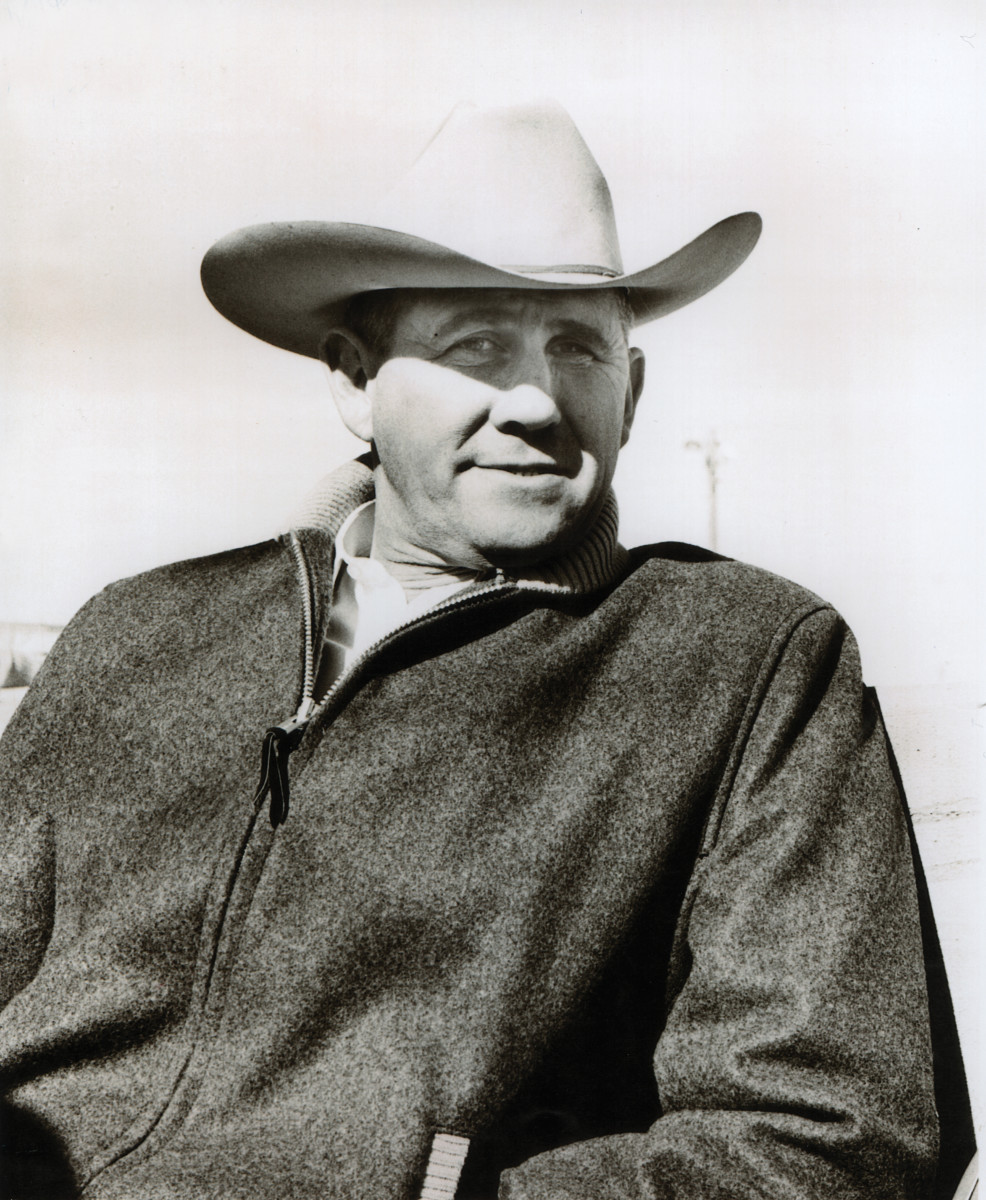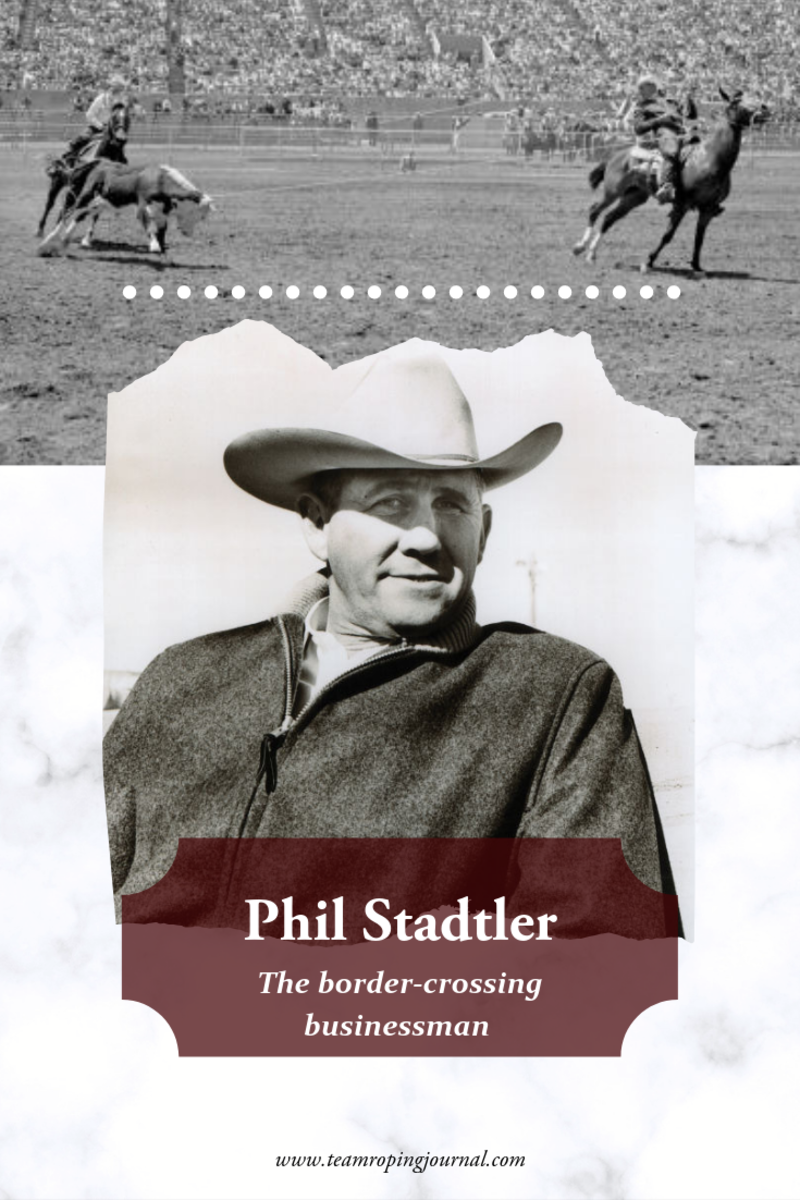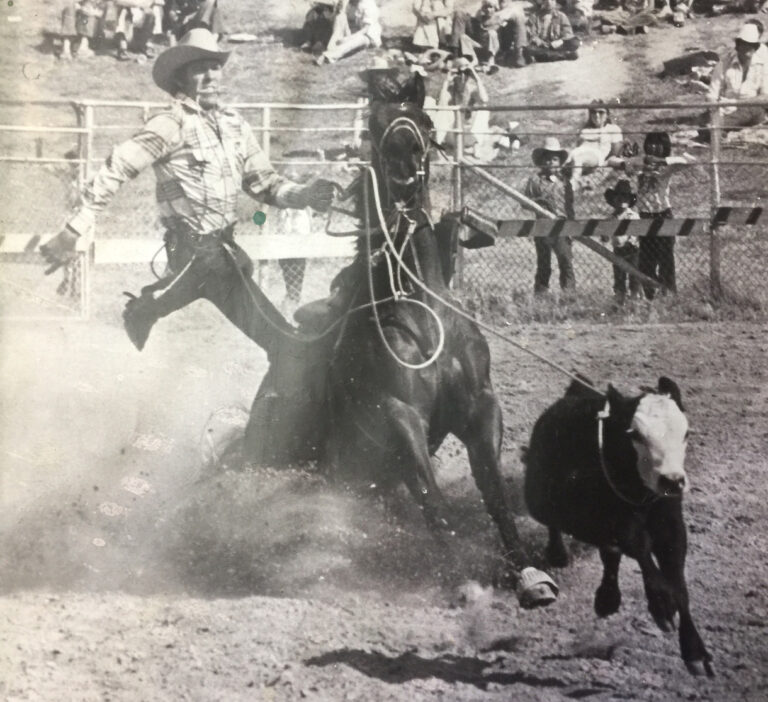In 2003, rodeo historian Gail Woerner conducted an interview with cattleman and Turtle Rodeo Association member Phil Stadtler. The interview, which was conducted on behalf of the Rodeo Historical Society for the National Cowboy and Western Heritage Museum in Oklahoma City, focused on the then-83-year-old’s contributions to the rodeo world, but it revealed a few fascinating tales (with swords and pirate ships, literally), including perhaps, the origins of team roping as we know it.
[More Turtle Members: Just A Little Wolfy: Carl Wilken]
Stadtler was born in California on July 30, 1920, and, by 1926, rodeo greats Jesse Stahl and Clay Carr were putting Stadtler, 6, on his first calf at Salinas.
“Clay worked for my uncle breaking colts,” Statdler explained to Woerner, “and Jesse Stahl was a friend of my dad’s. … I got bucked off and tore my sweater and it cost $2. My grandmother had bought it for me, and I cried.”

Despite the temporary trauma (Stadtler reported his grandmother bought him another sweater), it marked the beginning of a lifelong relationship not just with rodeo, but also with the cattle.
“I started with $280 that I borrowed in Hilmar at the Bank of America and bought four jersey heifers and started trading. … When I found out about the bulldogging steers that everybody needed—1,500 rodeo steers would have furnished all the rodeo cattle for the whole United States in the early ’40s and the ’30s because they just had bulldogging.”
[More Icons: Force of Nature: Jim Scott]
It was 1939 when Stadtler’s trading took him to Mexico for the first time.
According to Stadtler’s telling, he had brought the cattle he purchased in Mexico up to California, and Washingtonian John Peth—a contractor and father to Hall-of-Fame Bullfighter Wick Peth—was in town to buy some bulls.
“John Peth [with his wife and Wick], they came here. … I had about 80 bulls and that boy rode every one of those bulls in two days. … They’d started roping in Hayward, and then here we did a jackpot roping and that’s what started John Peth because he was roping here and he said he thought that was wonderful.
“[He] bought a load of roping steers and two horses and went up to Washington and started team roping. … So that’s really what started the team roping was John Peth up there in the North and down South they had steer tying, tied rope.”
It’s hard to nail down the exact years when the cogs in the team roping wheel may have started turning, but by May of 1946, team roping was a part of the show at the inaugural Clover Roundup—predecessor to today’s Oakdale Rodeo.
The boom in the sport meant a boom in demands for cattle, and Stadtler constructed an incredible network with cattleman all through Mexico and even as far as Guatemala. As his operations grew across Central America, he built his empire here and constructed three stockyards along the southern border: one in Eagle Pass, Texas; one in Douglas, Arizona; and the largest—Union Stockyard—in El Paso.
[More Icons: Paving Ways: Arizona’s Beaver Bird]
“I spent many years trading out of Mexico, as high as 250,000 cattle a year. … I went to trading with the Mexican cattle and built up a credit and had a wonderful affair with the Mexican people. They all trusted me and they’ve got my picture in the Cattleman’s Union in Chihuahua City [with two others], as the Union’s three favorite cattle buyers in Mexico. For honesty I guess. Or just being fair with them. I was proud of that.”
As he tells it, Stadtler would write deposit checks to his sellers and write out what the money was for on the back of the check.
“I built up a trust with the Mexican people and I’d give them a deposit and I’d write on the back of the check, this is a deposit for so many calves, so many yearlings, so many 2-year-olds, so many 3-year-olds. When they endorsed it, that’s the only contract I ever had. “
It wasn’t all good times, though. Statdler enjoyed many, many years of good fortune and booms in the cattle and rodeo industry, but he wasn’t impervious to market busts.
“I never had a bit of trouble in Mexico for 25 years or so until I got too big and got to trusting too many young people that were a little dishonest. When it came to 1974, the market got bad and I had 39,000 cattle and I had a lot of partners here and Mexican partners and I lost $14 million.”
It’s a staggering sum considering the $2 sweater and then the $280 loan Stadtler started with. Still, he managed to recover.
“I just stayed with it and I never took bankruptcies. … You can go through life doing business and you don’t have hurt anybody. That’s what my motto has been, and I’m very proud of it.”

Of course, Slim Pickens may have a different take on that tale, but Stadtler did greatly enjoy his rodeo years. (It’s worth looking up the photo of Stadtler knocking Pickens’ tooth loose in the alley of the Cow Palace in 1951.) Like many of the old cowboys, he competed in a number of events.
“My best lick was bulldogging,” he said, but he also competed in wild cow milking and ropings and he marveled at the old set-ups.
More Icons: Billy Pipes: From Producer to Participant]
“I bought [a] horse at Tucson for $700, which was a lot of money back then. Everybody had to have a horse that could really run 60-foot scores in Tucson and Salinas.”
In later years, Stadtler’s enjoyment in the arena stemmed from other aspects.
“My dad and I roped over here at the Oakdale roping. We put that on 46 years ago, I think. And I roped with my dad, my son, and my grandson, so that’s four generations. My son and my grandson are both good ropers.”
In the year’s since Stadtler’s passing in 2011, the Phil Stadtler Memorial Roping is held in his honor in conjunction with California’s Oakdale 10-Steer and, according to his granddaughter, Stacey Porteur, attracts between 300 and 400 teams each Labor Day weekend. In 2018, Stadtler’s grandson, Charlie, roped with his daughter, Sierra, at the event, making for five generations of ropers.
In 2004, Stadtler was awarded the prestigious Chester A. Reynolds award from the National Cowboy and Western Heritage Museum and, in 2007, he published an autobiography, “I Made a Lot of Tracks,” chronicling his adventures in the cattle industry and his role in rodeo history, available for purchase on the book’s Facebook page, run by Stacey, who has kept the book in print despite it repeatedly selling out.
[More Icons: Team Roping Legends with Jerry Anderson and The Minor Brothers]







